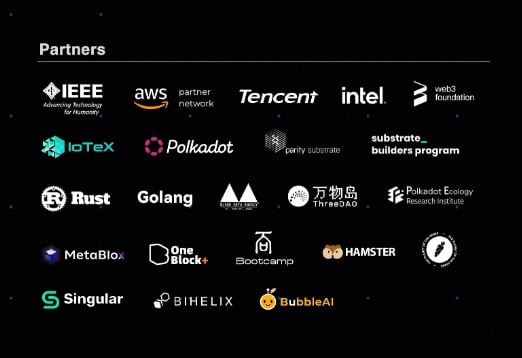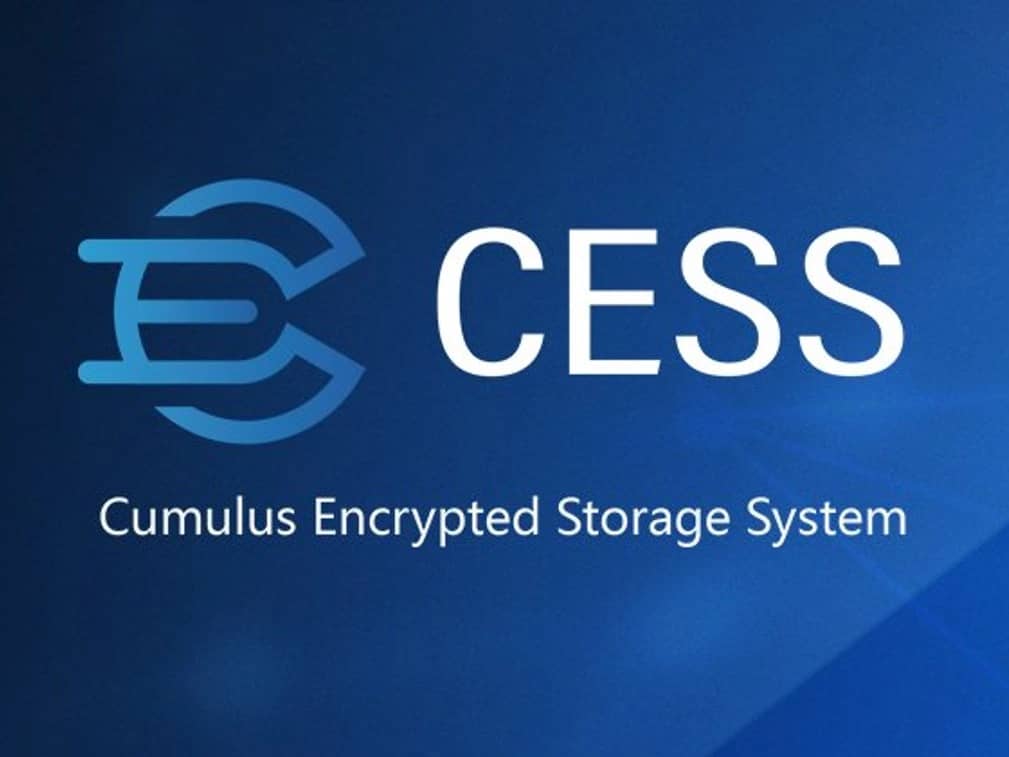Subscribe to wiki
Share wiki
Bookmark
CESS Network
The Agent Tokenization Platform (ATP):Build autonomous agents with the Agent Development Kit (ADK)
CESS Network
CESS Network is a decentralized data infrastructure with native Content Delivery and Distribution Network (CD²N) capabilities. It aims to provide a scalable, and efficient storage and retrieval of high-frequency dynamic data for Web3 applications, catering to the large-scale storage needs of both Web2 and Web3 businesses. [1][2]
Overview
CESS operates as a public blockchain network that combines distributed storage capabilities with a high-speed content delivery network. Its primary goal is to reshape the value distribution and circulation of data assets while ensuring data sovereignty and user privacy. The project seeks to offer an optimal Web3 solution for storing and retrieving high-frequency dynamic data, supporting various use cases from decentralized file storage to AI model training. [1]
"Our vision is to create a secure, transparent, and high-throughput decentralized data value network. Operating as a public blockchain network with distributed storage capabilities and high-speed CD²N, CESS promotes AI advancements through web3 protocols." - CESS Network vision statement[1]
Key Features
CESS Network offers a robust decentralized storage solution by pooling storage resources from participants into a unified network. This ensures data authenticity, integrity, and security through decentralized consensus mechanisms. [4]
Additionally, its Content Decentralized Delivery Network (CD²N) enables millisecond-level access to hot data in a decentralized environment. CESS also provides custom data permissions, using Proxy Re-Encryption Technology to allow secure data sharing among authorized parties without exposing the data's content. [4]
For compliance and security, it offers location-based storage selection, ensuring data remains within specific borders, and addressing national security concerns. The network further implements a cloud-based disaster recovery system, using a Proof of Data Reduplication and Recovery (PoDR²) mechanism to prevent data loss and ensure data integrity. Lastly, CESS supports AI-driven solutions by facilitating federated learning for AI model training with data from multiple sources while maintaining privacy. [4]
Technology
Proof of Data Reduplication and Recovery (PoDR²)
This ensures data security, integrity, and availability through data redundancy and random challenge mechanisms. [5]
Proof of Idle Space (PoIS)
Validates available storage space by generating idle files in a Stacked Bipartite Expanders directed acyclic graph, verified through random challenges. Storage nodes can also exchange their storage contributions for incentives. [5]
Proxy Re-encryption Technology (PReT)
Enables data sharing, circulation, and ownership transfer without compromising privacy. User data is also processed and accessed in Trusted Execution Environment (TEE) within the storage nodes. [5]
Random Rotational Selection (R²S)
A consensus mechanism where validators rotate based on node scores, with the top performers becoming the next round's validators. Utilizes a Verifiable Random Function (VRF) for block production. [6]
Multi-layer Network Architecture
Combines blockchain, storage, and content delivery layers to create a comprehensive decentralized data infrastructure. [7]
System Architecture
CESS Protocol Suite includes a blockchain service layer, distributed storage resource layer, and distributed content delivery layer. [7]
The CESS Blockchain provides blockchain service for the entire CESS network, including encouraging unused storage resources and computational resources to join the CESS network to provide data storage, data rights confirmation, and other services for the application layer. [7]
The Distributed Storage Resource Layer uses virtualization technology to realize the integration and pooling of storage resources. The infrastructure consists of storage capacity miners and storage scheduling miners. [7]
The Distributed Content Delivery Layer utilizes content caching technology to ensure rapid distribution of stored data, involving both data index miners and data delivery miners in the process. [7]
Blockchain Architecture
The blockchain layer is further divided into five layers; Incentive layer, Consensus layer, Network layer, Data layer, and Infrastructure layer. [8]
CESS Token Distribution
CESS tokens are distributed through several mechanisms. Storage miners with available storage capacity can join the network and earn tokens proportional to their bandwidth and storage contributions. [8]
For consensus mining, miners with qualified computational resources can stake CESS tokens to run candidate consensus nodes. If selected by CESS’s random consensus mechanism as one of the on-duty validators, these nodes receive rewards. [8]
Community governance also plays a key role, where developers, community members, and partners can submit funding proposals on-chain. These proposals undergo a voting process, and once a quorum is reached, the corresponding proposals are enacted, with rewards issued. [8]
The CESS community transparently manages the Community Development Fund (CDF) through a Decentralized Autonomous Organization (DAO) governance structure. Finally, all incentive-related activities, including token distribution, are executed through smart contracts, ensuring fairness and transparency in the fund's allocation. [8]
Product
DeOSS
DeOSS (Decentralized Object Storage Service) is a decentralized object-based, low-cost, secure, agile, and scalable distributed mass storage service for the web3 industry. Both enterprises and individuals can use DeOSS to store, manage, and protect data, such as NFT images and videos, dAPP, user data, DeFi programs, etc. [9]
DeOSS utilizes online idle storage resources based on blockchain technology to build a vast distributed storage network. [9]
The mission of DeOSS is to give the data ownership and benefits right back to the data producers, rather than centralized platforms. DeOSS follows the Apache 2.0 open-source protocol and allows one to deploy it at any time, any place, and to use it to freely access files stored distributedly around the world.[9]
DeOSS can be used by dApps, NFTs, Web3 developers, SocialFi developers, and users with large-scale data storage requirements. [9]
Use Cases
CESS supports diverse applications, including personalized cloud storage for businesses and individuals, and a permissioned data lake (DeOSS) for cost-effective data management and AI use. It enables website hosting, and on-chain verification for real-world assets (RWA), and protects ownership of AI-generated content (AIGC). CESS also facilitates data monetization through its decentralized marketplace, provides off-chain storage for Layer 1 and 2 blockchains, supports tamper-proof storage for Web3 gaming, and offers secure global sharing of large files for decentralized streaming media.
Achievements
- The Member of the Government Blockchain Association and the Blockchain Association
- Proposed the 1st Decentralized Storage IEEE Standard-P3233 《Standard for Blockchain-Based Decentralized Storage Protocol Specification》
- Official Member of the Web3.0 Standardization Association (Hong Kong)
- Awarded three Web3 Foundation Grants
- Completed Substrate Builders Program
- 1st Place in the 2021 Winter Polkadot Hackathon[3]
Partnerships
- Polkadot
- Blockchain Association
- Tencent
- Intel
- IoTeX
- SFT Protocol
- SubWallet
- Web3 Foundation
- Parity Substrate
- Bitcoin Cash[2]

See something wrong?
The Agent Tokenization Platform (ATP):Build autonomous agents with the Agent Development Kit (ADK)
